The next-gen MacBook Pro with Retina Display Review
by Anand Lal Shimpi on June 23, 2012 4:14 AM EST- Posted in
- Mac
- Apple
- MacBook Pro
- Laptops
- Notebooks
Final Words
Apple has done an incredible job with the next-gen MacBook Pro. It brings a level of portability to the 15-inch chassis that we’ve never seen before from Apple, all while getting a good handle on some of the thermal and noise issues from last year’s model. If you’re like me and have to lug your 15-inch MBP around, the improvements in portability alone are worth the upgrade. But a lighter chassis is hardly all Apple is relying on to sell this system.
The internals are easily the best collection of parts Apple has ever assembled. Ivy Bridge and Kepler are natural fits, but shipping the machine with 8GB of memory by default is a much appreciated gesture especially considering its un-upgradeable nature. For the first time in Apple’s history of shipping NAND flash based storage in Macs, I actually have no complaints about the controller choice in the rMBP. Samsung’s PM830 (or the consumer, SSD 830, version) is what I’ve been recommending to Mac users for much of the past year. It’s still possible that you’ll end up with a non-Samsung controller, and I don’t yet know whether or not that’s a bad thing, but this is at least progress.
The connectivity story on the rMBP is near perfect. The pair of Thunderbolt ports allows extra flexibility as well as the ability to drive more bandwidth to external IO than any prior portable Mac. The Thunderbolt teething issues still remain unfortunately, but it looks like that’s going to require at least a partial act of Intel to rectify. USB 3.0 is a welcome addition to the Mac family. It took both Apple and Intel far too long to get to this point, but I’m glad it’s here.
All of this is really just wrapping however, as the real gift is the MacBook Pro’s first Retina Display. It’s easily the most beautiful display I’ve had the opportunity of using. Even more impressive to me than the iPad’s Retina Display, and enough to make me actually want to use the Mac as a portable when at home rather than tethered to an external panel. The added portability of the chassis likely contributes to that fact though.
The credit Apple deserves for the display extends beyond simply pushing LG to get a panel out on time and in large enough quantities. There’s a tremendous amount of software work that Apple put into making the Retina experience work under OS X. The OS and several key applications have been updated to properly support the MacBook Pro’s Retina Display, and things can only get better from here. Mountain Lion will improve performance and I would expect at least a few key app updates over the next year to bring increased Retina awareness.
There’s also the behind the scenes work Apple put in to make all of this happen. The pressure on the GPU vendors, as well as taking matters into its own hands with writing scaling and filtering routines to deliver a good experience are all noteworthy.
It’s because all of this that I’m doing something I’ve never done before in an Apple review. We rarely give out Editor’s Choice awards at AnandTech, and I’m quite possibly the stingiest purveyor of them. I feel that being overly generous with awards diminishes their value. In this case, all of the effort Apple has put into bringing a Retina Display to the MacBook Pro is deserving of one.
 I’m giving the MacBook Pro with Retina Display our bronze Editor’s Choice award. Making it the first Mac to ever receive one. It would have been a silver had the software story been even stronger (iWork, Mountain Lion, Office and Photoshop being ready at launch would have been a feat worth rewarding). And it would have been a gold had Apple been able to deliver all of that but without sacrificing end-user upgradability. Which brings me to my final point.
I’m giving the MacBook Pro with Retina Display our bronze Editor’s Choice award. Making it the first Mac to ever receive one. It would have been a silver had the software story been even stronger (iWork, Mountain Lion, Office and Photoshop being ready at launch would have been a feat worth rewarding). And it would have been a gold had Apple been able to deliver all of that but without sacrificing end-user upgradability. Which brings me to my final point.
I accept the fact that current mobile memory and storage form factors preclude the creation of the thinnest and lightest form factors. But I would like to see Apple push for the creation of industry standard storage and memory form factors that wouldn’t hinder the design of notebooks like the Retina Display equipped Macbook Pro. As Apple has already demonstrated that it has significant pull with component vendors, this should be possible. The motivation behind doing so is no different from the motivation driving the use of Retina Displays: for the betterment of the end user experience.
Sidebar: Impacting the Rest of the Industry
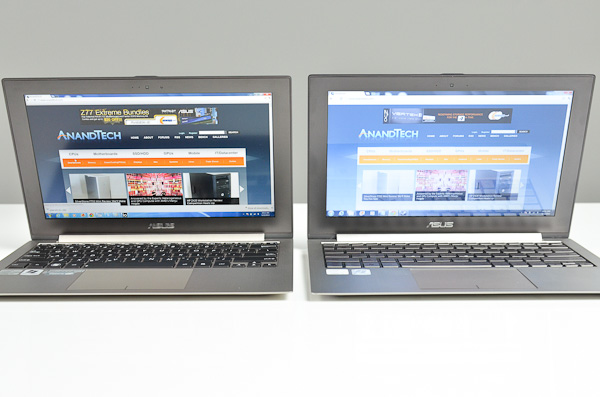
ASUS Zenbook Prime (left) vs. Zenbook (right)
Apple’s impact on the industry has already been felt. The threat of Apple bringing Retina Displays to its entire lineup forced ASUS’ hand and gave us 1080p IPS panels in the new Zenbook Primes. This will undoubtedly continue. In the early days Apple simply raised the bar for a focus on industrial design. Apple’s influence quickly expanded to touch everything from packaging to trackpads. We’re now seeing PC OEMs focus far more on experience than they ever have before. Apple isn’t the only one to thank for this, but the company is a significant factor.
The fact of the matter is the days of blaming a lack of innovation on cost or the inflexibility of one’s suppliers are over. In fact, those days are long gone. Today the MacBook Pro with Retina Display exists at a very high starting price, but make no mistake, it won’t remain there indefinitely. Apple introduced this model as the next-generation MacBook Pro because it truly is a preview of what’s to come. Maybe next year’s model won’t be any cheaper, but the one after that definitely will be. Apple has a healthy obsession with high quality displays and it will put its might behind panel suppliers until it can put forth a lineup of top to bottom Retina Displays. There’s no doubt in my mind that within the next 12 - 24 months Apple will introduce an external 4K Retina Display. Whether you love, hate or are indifferent about Apple and its products, its impact on the industry is tangible. PC OEMs now care about display quality and keyboard feel. They care about trackpads and design. There’s only one motivator in this industry stronger than Moore’s Law: experience, and the PC OEMs finally care about that too.
Apple’s success hasn’t been because it is a vertically integrated company. On the contrary, everything Apple has done Acer, Dell, HP, Intel, NVIDIA and Microsoft could have done together. Apple is successful because its competitors have all been selfishly focused on themselves rather than all coming together to build better computers. Based on my conversations with Intel and some of the OEMs at Computex earlier this month, the wake up call has been heard. Intel seems quite motivated to help its OEM partners do better. It is a bit troubling for the ecosystem that Microsoft is throwing its hat into the ring as a competitor - especially as it was Microsoft's inaction on the software side that really hurt the PC OEMs over the past several years.
For years we’ve been pushing OEMs to focus on better displays, and for years we were given cost and customers-don’t-care as excuses for why we don’t get them. That’s all starting to change.


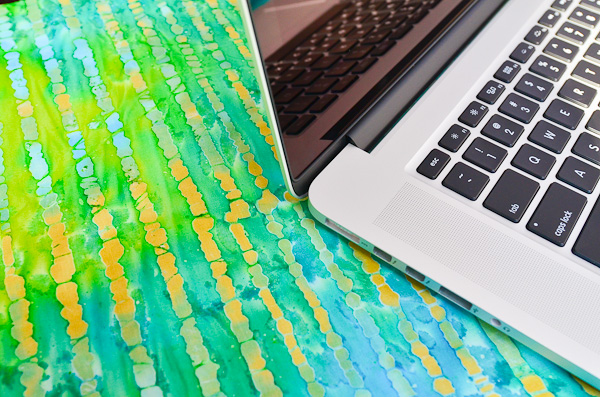
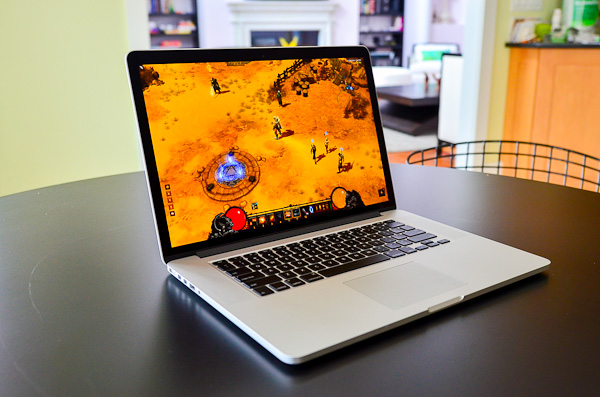
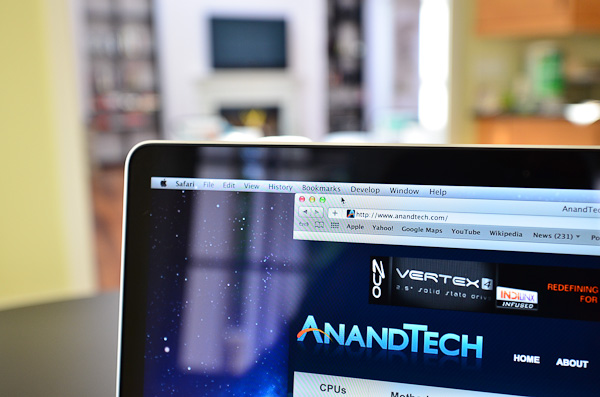
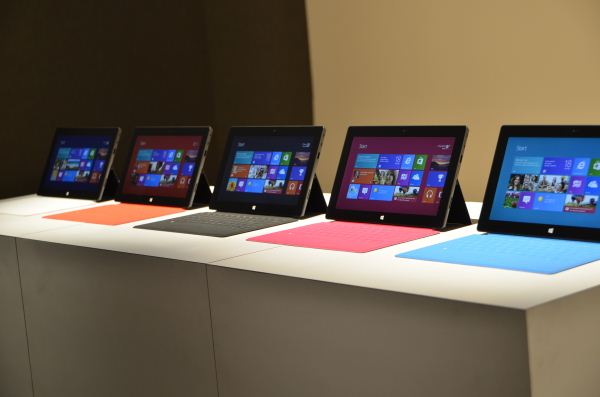








471 Comments
View All Comments
iCrunch - Sunday, June 24, 2012 - link
Agreed. This review is awesome. I hope he's right about the 4K Retina Thunderbolt display, which I'd buy in a heartbeat. One thing I don't get is why so many people and reviewers alike consider the $2,200 price tag extremely and often times too expensive. You're getting the latest and the greatest processors, both CPU and GPU-wise, a generous 8GB of RAM and I find the 256GB SSD to be plenty. After my two 180GB Intel 520 SSD's, this is the largest single SSD that I have ever owned. The upgrades are fair as well as far as doubling the RAM for $200 is concerned. At Apple no less! A few months ago, any setup of 16GB of RAM in 2 SODIMM's was well over $300 and if you go back a few more months, that amount of RAM set you back over a full grand! As in $1,000+I couldn't justify the $600+ price difference for an extra 300MHz in CPU clock and an additional 256GB Flash, though. If the GPU had come with 2GB GDDR5, then maybe, but not as it stands today.
hyrule4927 - Sunday, June 24, 2012 - link
First of all, the 650M may be one of the latest mobile GPU's, but it is pretty far from the greatest. It is a midrange GPU forced to drive an insane resolution with only 1GB of VRAM. And 8GB of RAM isn't "generous", to have any less in a laptop this expensive would be ridiculous. Paying $200 to upgrade to 16GB is a scam, especially considering Apple made the decision to prevent consumers from simply purchasing and installing more RAM on their own (you can find 2X8GB SODIMMs for a bit over $100, no idea what planet you were shopping on where that would cost $1000 at any time in the past year).EnerJi - Sunday, June 24, 2012 - link
I'm sure you can find 8GB of no-name stuff on sale somewhere, but for one example of name-brand memory, Crucial memory goes for $86.99 per 8GB ($173.98 total):http://www.crucial.com/store/listmodule/DDR3/list....
Also, Apple uses low-voltage DDR3-1600, which is lower volume and may be slightly more expensive as a result.
In that light, while $200 to upgrade to 16GB isn't exactly a bargain, it isn't the typical rapacious Apple upgrade prices.
Fx1 - Monday, June 25, 2012 - link
ARE YOU KIDDING? The 650M is running at 900mhz stock! people are clocking this bad boy well over 1050-1100mhzThose are ABOVE 660M GTX Speeds.
Id say Apple has packed in the BEST GPU possible given the thermal limits and size of this notebook.
In windows this MBP will run games at very nice settings and maybe the first Notebook that isn't as thick as an encyclopaedia that can run games on high settings.
Most will never use 8GB of Ram and 16GB is an option so i don't see the issue. Its also custom made which means Walmart RAM prices aren't compatible
hyrule4927 - Monday, June 25, 2012 - link
No, I'm not kidding. Nice capitalization though, it really does wonders for the credibility of your statements. Here are the flaws in your logic. You say that the 650M is the "BEST GPU possible given the thermal limits” with carefully placed capitalization in order to play down the qualifying terms in your statement. Then you suggest overclocking it. If Apple chose this GPU because they were fighting thermal limits, do you really expect it to handle overclocking well? And sure it can run Half Life 2 and Diablo III (an old game, and a game that is hardly demanding by modern standards) at standard resolutions, but users are going to want to game at native resolution on their new retina screen. Too bad Diablo runs at 18 frames per second. It is ludicrous to consider that a playable framerate, and if it can't handle Diablo, it won't be able to handle much of anything at that resolution. Again, that VRAM limitation is a killer. Considering that many popular current games, such as Skyrim, easily consume more than 1GB at 1080p, memory capacity is going to be an enormous bottleneck even when you are nowhere near native resolution. No matter how you want to look at it, a GPU like the 680M is much better suited for that screen, and the 650M doesn't even hold a candle to the performance of that chip.As for the system RAM, while I am sure that you enjoy shopping at Walmart, perhaps you should look on Newegg where you can find a 16GB kit from the manufacturer of your choice for just over $100. Of course you have probably never bought a single computer component in your life, so you can be forgiven for not knowing that. And you describe the "custom" RAM as if it is a selling point. Because everyone knows that proprietary format soldered RAM was included with the best interests of the consumer in mind . . .
iCrunch - Sunday, June 24, 2012 - link
Hi guys, does anyone have this new rMBP (love the abbreviation) and TOSHIBA "SSD "Flash storage"? You can find this in "System Information" under Serial-ATA and it will say either "Apple SSD TS256E" for a Toshiba drive/Flash storage. If you have a Samsung, it will say "Apple SSD SM256E". Naturally, if you have a 512GB drive, it'll display Apple SSD SM(or TS)512E.This should be interesting.
iCrunch - Sunday, June 24, 2012 - link
Thank you, Anand, for the single best and exhaustive review of this gorgeous new powerhouse. I picked one up from an Apple Store, so naturally, I only have the 8GB RAM. I have a 2nd one coming, also a 2.3, but with 16GB and then I will sell this one. That is, if I decide that I truly need and want 16GB. At $200 before any discounts, it sure seems like a worthwhile upgrade either way. There had better not ANYTHING be wrong with ANY other part of my new rMBP, though. lol...pxavierperez - Sunday, June 24, 2012 - link
It's funny how Anand went to great lengths describing, even posting an image as an example, how OSX DPI scaling implementation was superior compared to Window, which really was his point and the point that really mattered to end users, and yet we have Apple haters getting all fumed up just because Anand made one simple typo on the numeric value of Window 7 DPI setting.Sure you can set Windows 7 to scale 200% (2x) but it's flaky, dialog box breaks, inconsistency in rendering objects, and just all around not usable. It's not just all about features it's also about how they are wrapped together to make it work so seamless. Here Apple did a far, far better job than Windows. Which was Anand's point.
spronkey - Sunday, June 24, 2012 - link
All around, it's not a bad review. But I'm disappointed that you still decided to give it an award despite the massive issues:#1 - The soldered RAM.
#2 - The nonstandard SSD form factor.
#3 - The price. Not so much of the machine, but of the upgrades more than anything else.
I'm also disappointed that I didn't see (though may have missed) a bashing of the new MagSafe 2 connector. What a waste of time - just make the chassis ever so slightly thicker. Or, do what other manufacturers do and mould a port around it. Then make it look good.
However. For a Pro machine to be so bastardised... 8GB is not plenty of RAM. Look at the rate we've been increasing RAM requirements over the past few years - it's speeding up, not slowing down. In a year's time, 8GB will probably be standard on half new machines, and in 2 years it'll be very limiting.
I'm also disappointed that these points above aren't also factored in to a good bashing about Apple's very minimal warranty, and very expensive AppleCare product.
I've owned Macs for years - in fact all bar 1 of my portables have been Apple machines; the software/hardware integration just runs circles over the Windows slabs, but I'm really starting to get pissed off with Apple's blatant lockdowns and price gouges. It's anticompetitive and bad taste.
Ohhmaagawd - Sunday, June 24, 2012 - link
I wish it had socketed RAM and a standard SSD too.But fact is most people don't upgrade their machines (although pro users are much more likely). Apple really wanted the thinnest laptop possible with the longest battery life possible. Those goals conflict with upgradability. And I would guess Apple just doesn't care about upgradability. They don't want people opening their cases.
The future for apple laptops is clear: you won't be able to upgrade anything. So better buy what you need to start with.
If you can't deal with that, buy elsewhere.